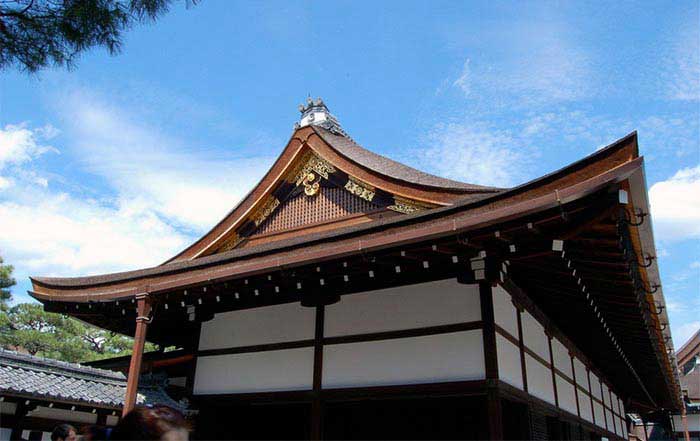You likely know Japan has many world-renowned historical sites. These include epic temples, parks and castles; yes, they are all there in this beautiful country. The country is also well-known for its special blend of the modern and ancient. This features modern technology, electric cars, and robot cafes. Do you love to delve into history and culture? Then you’ll probably marvel at Japan's many historic sites and tourist attractions. Japan has a long, complex and fascinating history; many are blown away by these elements. You can learn much about Japan by tracing the country’s ancient customs and traditions. Here are some of Japan’s most famous historical sites:
Kyoto Imperial Palace
This palace was, until 1868- the Japanese Imperial family’s home. From then, the authorities moved Japan’s capital city from Kyoto to Tokyo. Significantly, the Kyoto Imperial Palace remains a primary part of the larger Kyoto Imperial Park; it’s located right at the heart of Kyoto city. While around this place, make sure you visit the Sento Imperial Palace as well. As fate had it, the Kyoto Imperial Palace was burned down years later, but clever architects restored it recently (in 1855). The current complex is defined by gardens, numerous gates and a great hall. You can visit the Kyoto palace without booking earlier. Note, however, that visitors aren’t allowed to enter the building.
Kyoto Golden Pavilion
The Zen temple, located in Northern Kyoto, is renowned as one of Japan’s most photographed temples. At the same time, it’s among the most historically significant monuments. This makes the Kyoto Golden Pavilion rank among the worthiest places to visit in Japan. You might guess it from the very name ";Kyoto Golden Pavilion-"; (the temple is literally covered in gold leaf; it’s made up of three floors. The Kyoto Golden Pavilion is a renowned former retirement residence of Shogun Ashikaga. After Ashikaga’s death in 1408, the place was changed into a Zen temple. The temple’s structure was eventually taken through several rebuilding processes; its current structure was designed more recently in 1955. To access this place, you can use bus number 205 or 101 from the Kyoto station or travel to the Kitaoji Station through the Karasuma line. The pavilion overlooks a beautiful, well-endowed pond on the sidelines.
Meiji Jingu (Tokyo)
You’ll find the Meiji Shrine historical monument in Shibuya, Tokyo. The architects built this shrine in dedication to the spirits of Empress Shoken and Emperor Meiji. The latter (Emperor Meiji) is famously known for making sure Japan was opened up to the West. It’s among Tokyo’s most important Shinto shrines. The architects built the shrine on rusty, quiet land. It has a spacious park that spans 200 meters; the park is located behind a 12-meter tori gate; a visitor must pass through it to get to where the shrine is. Admission to this shrine is free- visitors will find the Meiji Shrine open anytime-from sunrise to sunset. You can also use the JR Yamanote line (on your way down to the Harajuku station) to get to the shrine.
Sensoji Temple (Tokyo)
Tokyo’s Sensoji’s Temple is renowned as the city’s oldest temple. Since Tokyo is so full of temples, it’s quite remarkable that the Sensoji Temple has existed for the last 1,500 years. The shrine hosts one of the largest souvenir markets in the city. It also hosts several attractive locations that draw hordes of tourists each year- among these is the famous Kaminarimon Gate. The temple is indispensable for tourists because of its cultural and historical significance; it offers excellent opportunities for sightseeing. If you ever visit Tokyo, make sure you don’t miss out on the tourist-loved Nakamise Shopping Street. It doesn’t take more than 17 minutes to ride a train from the Tokyo railway station to the precincts of the Sensoji Temple.
Kamakura
Kamakura is a beautiful seaside city located in the Kanagawa Prefecture; it takes an hour’s drive from Tokyo city to reach Kamakura. In the 12th century, Kamakura was recognized as Japan's political centre. And in the 14th century, when the city’s government collapsed, Kamakura remained steadfast as Eastern Japan’s major political centre. Well, the 14th-century story was a sharp contrast to the city we know today- a city that- although small- is ever filled with hundreds of tourists, an abundance of temples, shrines and historical monuments. Further, Kamakura’s sand beaches are famous as a crowd favourite, particularly during summer. While visiting the famous city, some top attractions include the Hokokuji Temple, the Great Buddha, Kenchoji Temple, the Zeniarai Benten, and the Hachimangu Shrine.

